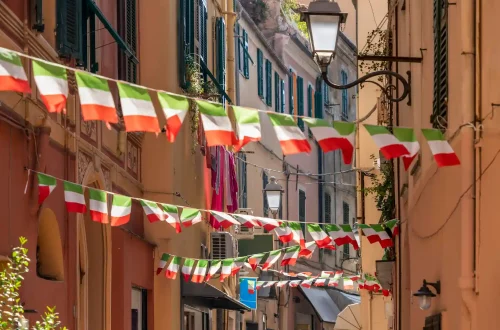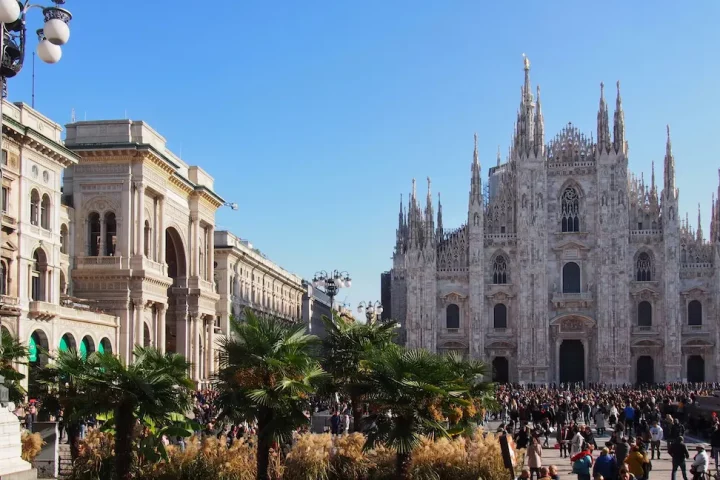Italian citizenship can be acquired through several pathways, each with its own set of requirements. The main routes include citizenship by descent (jus sanguinis), marriage, and residency. Understanding these pathways and their specific criteria is important for those seeking Italian citizenship.
Citizenship by descent (jus sanguinis)
- Basic criteria: citizenship by descent, or jus sanguinis, is one of the most common ways to obtain Italian citizenship. This pathway is available to individuals who have an Italian parent or grandparent born in Italy. Alternatively, eligibility may apply if one’s Italian parent—not grandparent—resided continuously in Italy for at least two years.
In both cases, it is essential that the Italian ancestor held exclusive Italian citizenship at the time of their death.
- Required documentation: to apply for citizenship by descent, you will need to gather several documents, including:
- Birth, marriage, and death certificates for each person in the line of descent, starting from the Italian parent or grandparent.
- Proof of non-naturalization of the Italian ancestor in the country where they immigrated.
- Birth, marriage, and death certificates for each person in the line of descent, starting from the Italian parent or grandparent.
For more information about obtaining Italian citizenship by descent, click here.
Citizenship by marriage
Basic criteria: If you are married to an Italian citizen, you may be eligible to apply for Italian citizenship. The waiting period before applying is two years of marriage if you reside in Italy, or three years if you reside abroad. These periods are reduced by half if the couple has children.
Additionally, applicants must demonstrate a knowledge of the Italian language, typically proven by obtaining a B1 level certificate.
Required documentation: The necessary documents for this pathway include:
- A legalized and registered marriage certificate in Italy.
- A certificate of proficiency in the Italian language (B1 level).
- Proof of residence in Italy or consular registration if residing abroad.
- Criminal, birth, or any other records required by the Italian authorities.
For more information about obtaining Italian citizenship by marriage, click here.
Citizenship by residence (Naturalization by residency)
Basic Criteria: Naturalization by residence is another pathway to Italian citizenship. To qualify, you must have legally resided in Italy for a continuous period of at least 10 years. However, this period can be reduced under certain conditions: four years for EU citizens, five years for refugees and adoptees over 18, and three years for descendants (up to the second degree) of Italian citizens.
Required documentation: Applicants must provide:
- Proof of continuous and legal residence in Italy.
- Criminal record certificates from all countries where the applicant has resided.
- A certificate of proficiency in the Italian language (B1 level).
Take advantage of specialized assistance to secure your passport for a borderless future.
Citizenship for 1948 female ancestry cases
- Basic criteria: The 1948 process applies to children and grandchildren of Italian women who gave birth to the next descendant before 1948. If born before this year, Italian citizenship would not be granted.
To obtain citizenship through this pathway, descendants must file a legal action in Italy, even after the creation of the new administrative system, arguing the unconstitutionality of the Italian citizenship law.
- Required documentation: The documentation required is similar to that for jus sanguinis. It includes birth, marriage, and death certificates of the line of descent. Additionally, you will need an Italian lawyer to represent your case in court.
For more information about 1948 cases, click on this link.
Italian Citizenship by court
As of 2025, with the enactment of Law No. 74/2025, Italian consulates and municipalities have ceased accepting applications for citizenship by descent. All administrative procedures are set to be centralized under a newly established governmental body; however, its structure, operational framework, and specific guidelines are still pending.
As a result, all existing consular and communal queues were formally dissolved, leaving judicial proceedings as the only available pathway to obtaining Italian citizenship. Applicants who intend to challenge Law 74/2025 are strongly advised to retain documentation—such as a receipt or proof of their original place in line at a consulate—as part of their legal strategy.
It is important to emphasize that the outcome of these legal challenges remains uncertain, as Italian courts continue to evaluate the constitutionality and retroactive implications of the law.
Click here for more information about Italian citizenship by court.
How to choose the right path to Italian citizenship
Each pathway to Italian citizenship has its own set of qualifications and requirements.
- Citizenship by descent requires proof of an unbroken line of Italian ancestry.
- Citizenship by marriage requires a period of marriage to an Italian citizen and knowledge of the Italian language.
- Naturalization by residence requires a long-term legal residence in Italy.
- The 1948 process involves a legal action for descendants of Italian women who gave birth before 1948.
Take advantage of specialized assistance to secure your passport for a borderless future.
Assess your personal situation to determine which pathway is most suitable for you. Each route has its own unique requirements, and understanding these will help you navigate the process more effectively.
More informations
- How to obtain Italian citizenship
- List of documents for Italian citizenship
- Italian citizenship requirements
Seek professional assistance
If you need assistance or want to avoid the hassle of navigating the process on your own, consider seeking the services of io.citizen. We can provide expert guidance and support to help you achieve your goal of obtaining Italian citizenship.
By understanding the different pathways and their qualifications, you can make an informed decision about the best route to take for acquiring Italian citizenship. Whether through descent, marriage, or residence, each pathway offers a unique opportunity to connect with your Italian heritage and enjoy the benefits of Italian citizenship.






